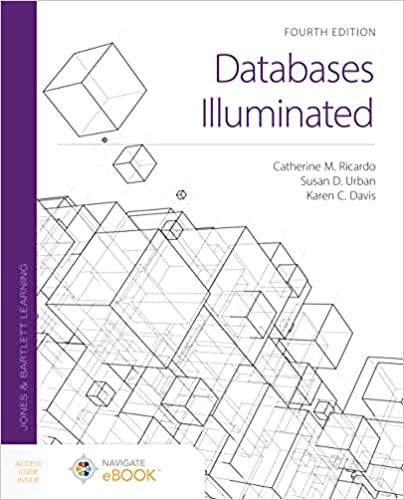Question
BACKGROUND: Let's consider three rules: If a number is even , divide it by 2. If a number is odd , triple it and then
BACKGROUND: Let's consider three rules:
If a number is even, divide it by 2.
If a number is odd, triple it and then add 1.
Stop if you ever get to 1.
For example, starting with 7:
7 22 11 34 17 52 26 13 40 20 10 5 16 8 4 2 1
or, starting with 12:
12 6 3 10 5 16 8 4 2 1
It has been conjectured (I suppose by someone named Ulam) that no matter what positive number we begin with, the pattern will always reach 1. This has been tested on trillions of numbers, and it has always worked, but no one has been able to prove that it works for all numbers.
TASK: Write a Python program that given some number determines how many numbers are in the sequence, or stated another way, determines how many "steps" (plus one) it took to get to one. For example, if given the number 12 (that is, reads a "12" from standard input), the program should determine that there are 10 numbers in the sequence (see second example above) and should print that result. Similarly, if given the number 7, the program should print that the sequence length is 17. The program should then read another number and repeat this process until a sentinel value of zero is detected.
IMPLEMENTATION NOTES: Define an integer value-returning function, named "ulam_sequence_length()", that when invoked with a single (positive) integer argument returns the Ulam sequence length of that integer. For example,
number = 7 x = ulam_sequence_length(number)
will assign a value of 17 to x.
Do not use any global variables. Read your data from standard input (stdin) using the input() function. Don't bother prompting the user for input as you will be using the UNIX input file redirection mechanism to obtain the input values from a file. Use as your source file name "ulam.py". Your output should consist of two columns of (right-justified) numbers: the first column is 12 characters wide and contains the input number; the second column is 6 characters wide and contains the number's corresponding Ulam sequence length.
Step by Step Solution
There are 3 Steps involved in it
Step: 1

Get Instant Access to Expert-Tailored Solutions
See step-by-step solutions with expert insights and AI powered tools for academic success
Step: 2

Step: 3

Ace Your Homework with AI
Get the answers you need in no time with our AI-driven, step-by-step assistance
Get Started


